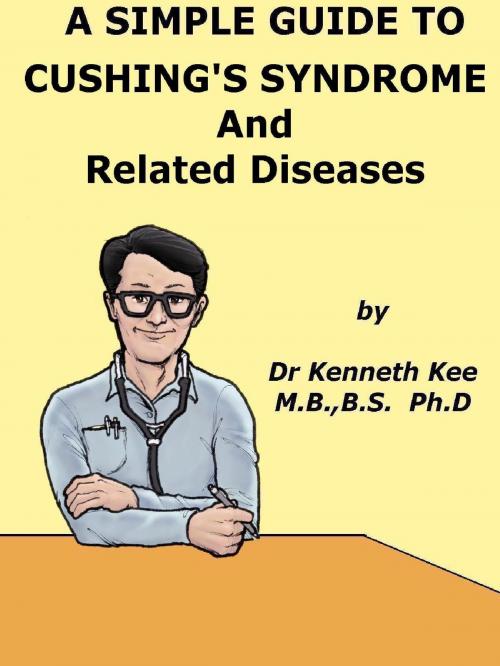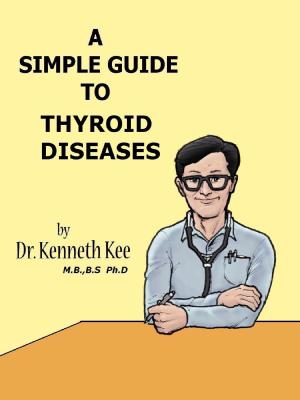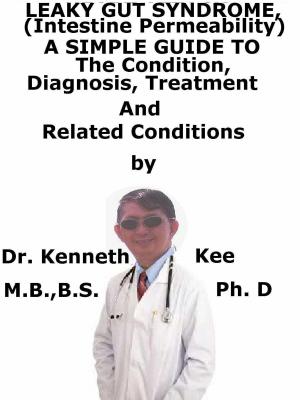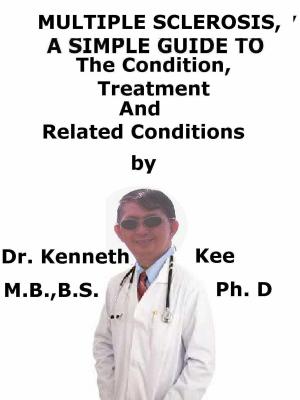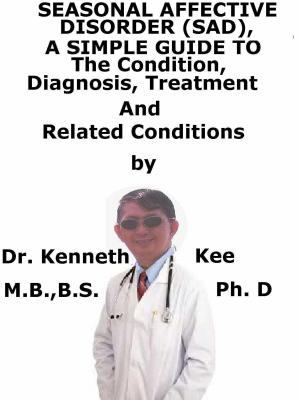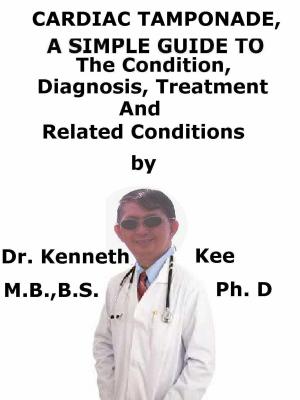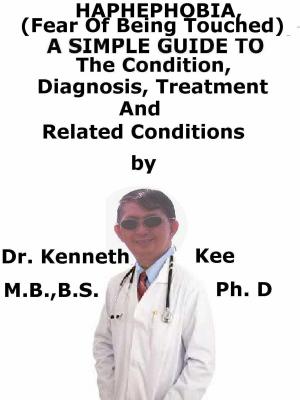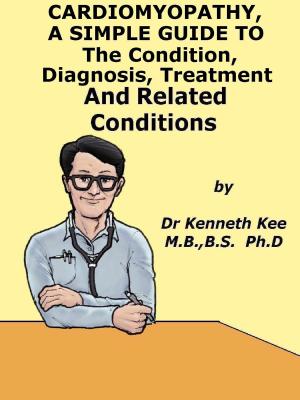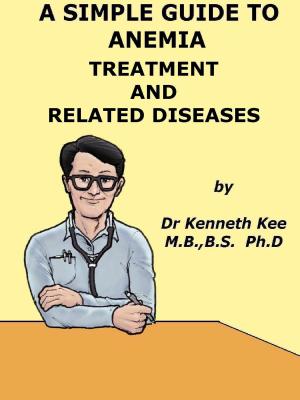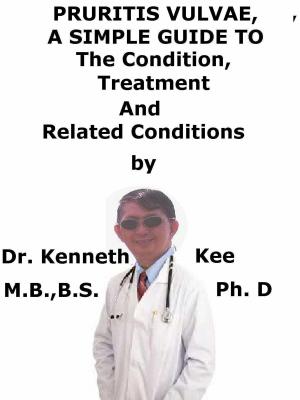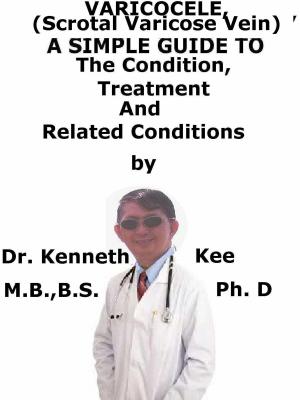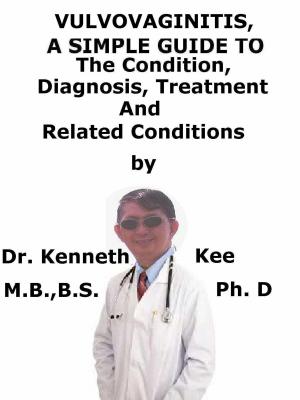A Simple Guide to Cushing's Syndrome and Related Conditions
Nonfiction, Health & Well Being, Medical, Specialties, Internal Medicine, Endocrinology & Metabolism, Health, Health Care Issues| Author: | Kenneth Kee | ISBN: | 9781301654932 |
| Publisher: | Kenneth Kee | Publication: | October 15, 2013 |
| Imprint: | Smashwords Edition | Language: | English |
| Author: | Kenneth Kee |
| ISBN: | 9781301654932 |
| Publisher: | Kenneth Kee |
| Publication: | October 15, 2013 |
| Imprint: | Smashwords Edition |
| Language: | English |
Cushing’s Syndrome
What is Cushing’s syndrome?
Cushing’s syndrome is a disease which is caused by the exposure of the body to excessive quantities of glucocorticoids steroids.
People of all ages are affected but more are seen in females between 30 to 50 years of age.
What are the causes of Cushing Syndrome?
The causes are believed to be:
- Cushing Disease -excessive production of adrenocorticotrophin hormone (ACTH) by the pituitary gland causes bilateral adrenal (gland above kidney) hyperplasia (overgrowth of gland tissue).
The enlarged adrenal gland will produce excessive corticosteroids.
A pituitary basophile or chromphobe adenoma may be present.
-
Adrenal tumors which may be benign or malignant can produce excessive corticosteroids
-
Ectopic ACTH syndrome
Production of ACTH by a tumor such as cancer of the lung leads to adrenal hyperplasia
- Iatrogenic -patients receiving excessive doses of corticosteroids may present as Cushing syndrome
What are the symptoms of Cushing Syndrome?
Symptoms of Cushing Syndrome:
-
Obesity predominally truncal often with pad of fat between shoulders (buffalo hump)
-
Round flat plethoric (red) face (moon face)
-
Skin is thin and bruises easily
-
Purple striae on abdomen, thighs, and shoulders.
-
Proximal myopathy leads to difficulty in getting out of chairs and walking upstairs
-
Excessive adrenal androgen secretions lead to hirsutism, amenorrhea and acne
-
Osteoporosis can lead to back pain
-
Hypertension and glycosuria (glucose in urine) are common
-
Depression and other psychiatric disturbance common
-
In children there may stunting of growth
-
Women with Cushing syndrome often have:
a. Excess hair growth on the face, neck, chest, abdomen, and thighs
b. Menstrual cycles that are irregular or stops -
Men may have:
a. Impotence
b. Reduced or no desire for sex
How is the Diagnosis of Cushing Syndrome made?
Diagnosis of Cushing Syndrome:
-
The typical moon face and buffalo hump can suggest the diagnosis of Cushing Syndrome
-
24 hour urine cortisol tests
-
Overnight dexamethasone suppression test
-
Plasma ACTH level
-
Chest X-ray to exclude lung cancer
-
X-ray of pituitary fossa to exclude pituitary tumors
-
Ultrasound of adrenal glands for enlargement
What are the complications of Cushing Syndrome?
Complications of Cushing Syndrome:
-
Hypertension
-
Fractures from osteoporosis
-
Stunted growth in children
What is the treatment of Cushing’s syndrome?
Treatment of Cushing’s syndrome:
Cushing's syndrome is treated by surgery, radiation treatments or drugs.
Often if there is a tumor on just one adrenal gland, the other gland often becomes smaller and stops normal hormone production
Hormone supplements are always given before any surgical treatment and should be taken for months after surgery until the second adrenal gland recovers its normal function.
-
Anti-adrenal drug such as aminogluthemide
This drug blocks the production of steroids formed from cholesterol.
It is clinically used in the treatment of Cushing's syndrome and metastatic breast cancer. -
Bilateral adrenalectomy
-
Surgery to remove pituitary tumor
-
Surgery to remove primary neoplasm in lungs or pancreas
-
In cases of adrenal gland cancer, chemotherapy and radiation can also be used to treat the cancer.
Surgery is a last resort. -
In iatrogenic Cushing’s syndrome, reduction of ingestion of corticosteroids to the lowest dosage possible has to done to control the illness.
TABLE OF CONTENT
Chapter 1
Cushing’s Syndrome
Chapter 2
Adrenal Tumors
Chapter 3
Corticosteroids
Chapter 4
Epilogue
Cushing’s Syndrome
What is Cushing’s syndrome?
Cushing’s syndrome is a disease which is caused by the exposure of the body to excessive quantities of glucocorticoids steroids.
People of all ages are affected but more are seen in females between 30 to 50 years of age.
What are the causes of Cushing Syndrome?
The causes are believed to be:
- Cushing Disease -excessive production of adrenocorticotrophin hormone (ACTH) by the pituitary gland causes bilateral adrenal (gland above kidney) hyperplasia (overgrowth of gland tissue).
The enlarged adrenal gland will produce excessive corticosteroids.
A pituitary basophile or chromphobe adenoma may be present.
-
Adrenal tumors which may be benign or malignant can produce excessive corticosteroids
-
Ectopic ACTH syndrome
Production of ACTH by a tumor such as cancer of the lung leads to adrenal hyperplasia
- Iatrogenic -patients receiving excessive doses of corticosteroids may present as Cushing syndrome
What are the symptoms of Cushing Syndrome?
Symptoms of Cushing Syndrome:
-
Obesity predominally truncal often with pad of fat between shoulders (buffalo hump)
-
Round flat plethoric (red) face (moon face)
-
Skin is thin and bruises easily
-
Purple striae on abdomen, thighs, and shoulders.
-
Proximal myopathy leads to difficulty in getting out of chairs and walking upstairs
-
Excessive adrenal androgen secretions lead to hirsutism, amenorrhea and acne
-
Osteoporosis can lead to back pain
-
Hypertension and glycosuria (glucose in urine) are common
-
Depression and other psychiatric disturbance common
-
In children there may stunting of growth
-
Women with Cushing syndrome often have:
a. Excess hair growth on the face, neck, chest, abdomen, and thighs
b. Menstrual cycles that are irregular or stops -
Men may have:
a. Impotence
b. Reduced or no desire for sex
How is the Diagnosis of Cushing Syndrome made?
Diagnosis of Cushing Syndrome:
-
The typical moon face and buffalo hump can suggest the diagnosis of Cushing Syndrome
-
24 hour urine cortisol tests
-
Overnight dexamethasone suppression test
-
Plasma ACTH level
-
Chest X-ray to exclude lung cancer
-
X-ray of pituitary fossa to exclude pituitary tumors
-
Ultrasound of adrenal glands for enlargement
What are the complications of Cushing Syndrome?
Complications of Cushing Syndrome:
-
Hypertension
-
Fractures from osteoporosis
-
Stunted growth in children
What is the treatment of Cushing’s syndrome?
Treatment of Cushing’s syndrome:
Cushing's syndrome is treated by surgery, radiation treatments or drugs.
Often if there is a tumor on just one adrenal gland, the other gland often becomes smaller and stops normal hormone production
Hormone supplements are always given before any surgical treatment and should be taken for months after surgery until the second adrenal gland recovers its normal function.
-
Anti-adrenal drug such as aminogluthemide
This drug blocks the production of steroids formed from cholesterol.
It is clinically used in the treatment of Cushing's syndrome and metastatic breast cancer. -
Bilateral adrenalectomy
-
Surgery to remove pituitary tumor
-
Surgery to remove primary neoplasm in lungs or pancreas
-
In cases of adrenal gland cancer, chemotherapy and radiation can also be used to treat the cancer.
Surgery is a last resort. -
In iatrogenic Cushing’s syndrome, reduction of ingestion of corticosteroids to the lowest dosage possible has to done to control the illness.
TABLE OF CONTENT
Chapter 1
Cushing’s Syndrome
Chapter 2
Adrenal Tumors
Chapter 3
Corticosteroids
Chapter 4
Epilogue
